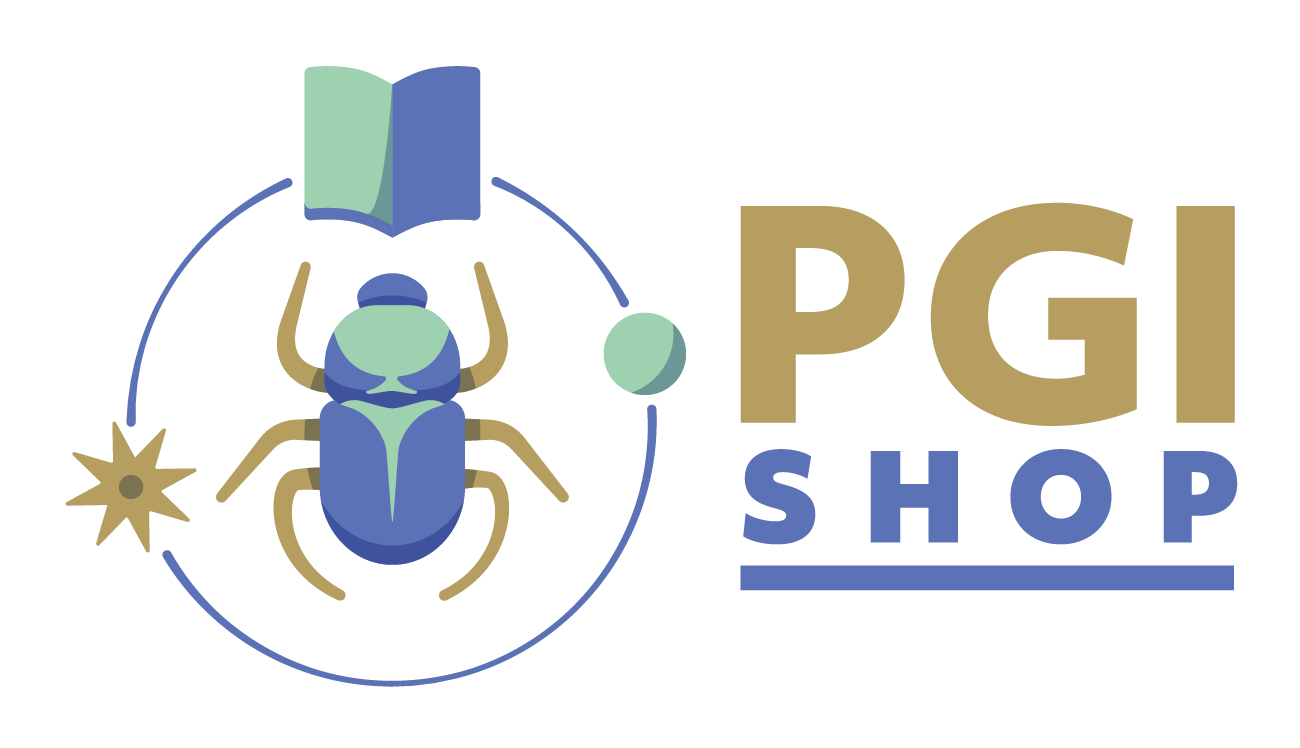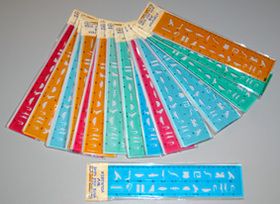30 Hieroglyphic rulers class set
30 rulers with hieroglyphic template in blue, red, green and yellow
Plastic ruler with 25 cm measuring scale. At the same time, the ruler is a hieroglyphic stencil with approx. 2 cm characters, suitable for drawing with pens. An ideal and memorable tool for the classroom. Also suitable as a gift.
Can be used as a normal ruler or as a template for hieroglyphic writing.
Dimensions: 27 x 6.5 cm (measuring scale up to 25.5 cm)
Colours: blue, yellow, red and green
Tip:
The hieroglyphic ruler is available in different sets, also with papyrus.
These are inexpensive and are particularly suitable for school classes and project work.
The workbook "Our Names in Hieroglyphics" teaches the basic features of ancient Egyptian writing in a vivid way.
The "Rosetta Stone" - the key to deciphering hieroglyphs - No. 2621
The hieroglyphic script
The term "hieroglyphs" is the Germanised form of the ancient Greek "hieroglyphikà grámmata", German, heilige Schriftzeichen or sacred indentations.
In the beginning, Egyptian hieroglyphs were a pure pictographic script and consisted mainly of pictograms. Only later were consonants and symbols added, so that the hieroglyphic script finally consisted of pictures, sounds and signs.
Anyone who wanted to pursue an administrative career in the state had to master writing as a basic requirement. Writing was reserved for a very few; as a rule, the ordinary people could neither write nor read.
Originally, hieroglyphs were mostly written in columns from top to bottom and from right to left. Representations of humans or animal signs always look towards the beginning of the text. Writing was done on stone, clay and papyrus, more rarely on leather and linen. Occasionally, the texts were artistically decorated and coloured.
The development of hieroglyphics
In the beginning, the ancient Egyptians possessed about 700 pictorial signs. In the course of time, more and more new signs were added; towards the end of the Pharaonic period, about 7000 symbols were in use.
Until 200 years ago, the "sacred signs" were considered untranslatable. Then Jean-Francois Champollion solved the riddle of ringed snakes and fixed eyes. The Rosette Stone provided the key to deciphering them - see also our product no. 2621.

